Whenever I’m confronted with “Your user research costs too much. We know our customers.” I always reply with, “Ahhh. But you don’t know your users.”
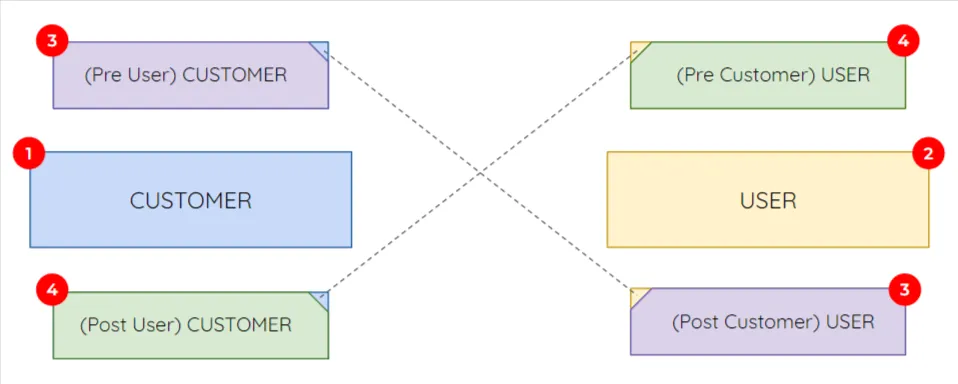
For the sake of brevity, we can’t go through every product or service model. But we can get a better understanding of the foundational issues with lumping your users into one bucket. It will be your job as the researcher to determine the specifics once you’re familiar with the user types.
CUSTOMER
This is an offline customer base. They love the products and may even love the company culture, etc. This is the first group of people you need to research. The app or site will not be mentioned. You’ll talk product (or service), culture, brand, customer service, lifestyle… you get the idea.
USER
A user is someone using the platform. Could be an admin, a customer, an SEO advisor, help desk, a window shopper, an advertiser. Your interview will revolve around the interaction they must perform to be successful (or converted, or retained).
PRE USER CUSTOMER / POST CUSTOMER USER
These are customers that followed them to digital (app or web). These fans will undoubtedly have a much different experience as users that found them for the first time online. Your interviews should lean on whether their offline expectations are being met online:
POST USER CUSTOMER / PRE CUSTOMER USER
These are users that found you online and you’ve converted them to a customer. First off “Hell yeah!” Great job. Now let’s retain and grow this base. These are questions about the product that they received after the online experience:
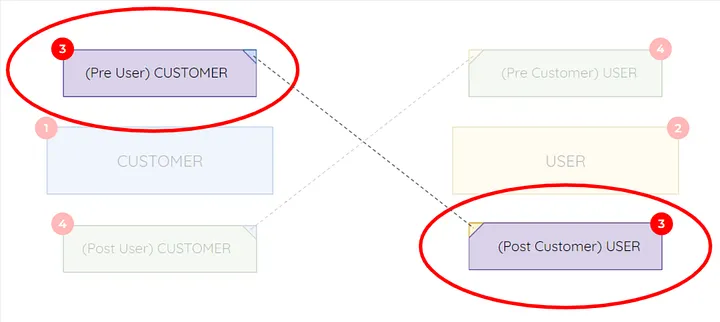
While these are both CUSTOMERS who became USERS, the interview will have different objectives based on how you are viewing them. An example would be in the CUSTOMER portion of the interview I’m asking them product/service question based on my knowledge of their pre-online fandom.
In the USER portion of the interview I’m asking them usability questions based on the knowledge that they already love the company and may have greater patience than #4 interviewees.
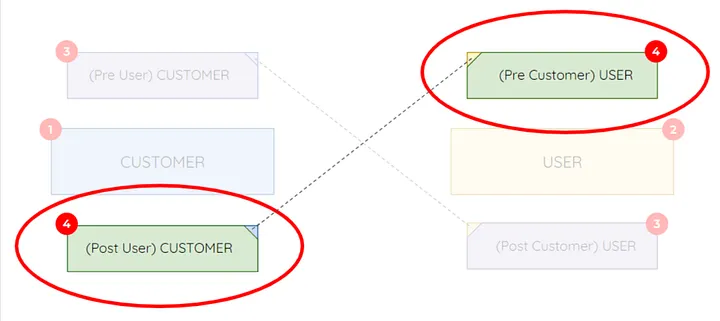
Conversely, these questions will be about whether or not the goods lived up to the hype. Obviously we ask all the usability questions as well. We want to know how to improve the experience. But we do so under the lens that these users converted and our most important job at this point is retention.
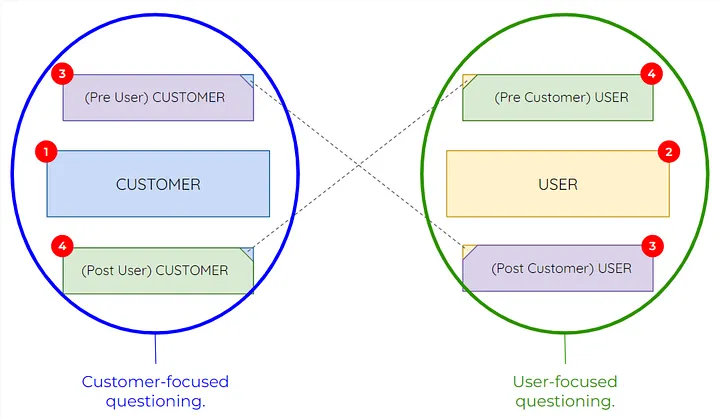
Know who the subject was and what order they experienced the brand is critical. Regardless, your focus should be split between CUSTOMER and USER. Remember, you will have users that never become customers. These are of evaluative analytical importance because at the end of the day:
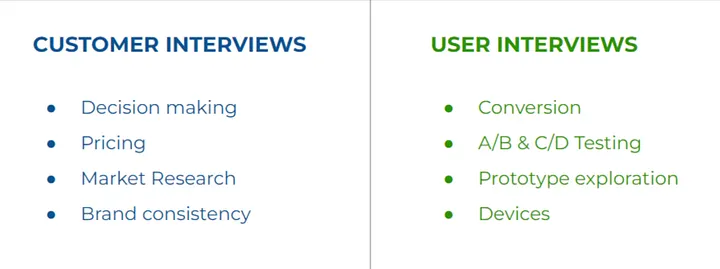
CONCLUSION:
The results of user interviews without context of origin can be devastating to your product. Always know the origin of the data and how it was collected. Furthermore how you archive findings can be equally powerful.
Original article, posted Sep. 2022 for Design Bootcamp, can be found on Medium.
Topics:
Scorch Agency collects the following data:
You directly provide Scorch Agency with most of the data we collect. We collect data and process data when you:
Scorch Agency collects your data so that we can:
Process your order, manage your account.
Email you with special offers on other products and services we think you might like.
If you agree, Scorch Agency will share your data with our partner companies so that they may offer you their products and services.
PingPilot
When Scorch Agency processes your order, it may send your data to, and also use the resulting information from, credit reference agencies to prevent fraudulent purchases.
Scorch Agency securely stores your data in Hubspot.
Scorch Agency would like to send you information about products and services of ours that we think you might like, as well as those of our partner companies. If you have agreed to receive marketing, you may always opt out at a later date.
You have the right at any time to stop Scorch Agency from contacting you for marketing purposes or giving your data to other members of the Scorch Agency Group.
Scorch Agency would like to make sure you are fully aware of all of your data protection rights. Every user is entitled to the following:
The right to access – You have the right to request Scorch Agency for copies of your personal data. We may charge you a small fee for this service.
The right to rectification – You have the right to request that Scorch Agency correct any information you believe is inaccurate. You also have the right to request Scorch Agency to complete information you believe is incomplete.
The right to erasure – You have the right to request that Scorch Agency erase your personal data, under certain conditions.
The right to restrict processing – You have the right to request that Scorch Agency restrict the processing of your personal data, under certain conditions.
The right to object to processing – You have the right to object to Scorch Agency’s processing of your personal data, under certain conditions.
The right to data portability – You have the right to request that Scorch Agency transfer the data that we have collected to another organization, or directly to you, under certain conditions.
If you make a request, we have one month to respond to you.
When you visit or log in to our website, cookies and similar technologies may be used by our online data partners or vendors to associate these activities with other personal information they or others have about you, including by association with your email or home address. We (or service providers on our behalf) may then send communications and marketing to these email or home addresses. You may opt out of receiving this advertising by visiting https://app.retention.com/optout
There are a number of different types of cookies, however, our website uses:
Functionality – Scorch Agency uses these cookies so that we recognize you on our website and remember your previously selected preferences. These could include what language you prefer and location you are in. A mix of first-party and third-party cookies are used.
Advertising – Scorch Agency uses these cookies to collect information about your visit to our website, the content you viewed, the links you followed and information about your browser, device, and your IP address. Scorch Agency sometimes shares some limited aspects of this data with third parties for advertising purposes. We may also share online data collected through cookies with our advertising partners. This means that when you visit another website, you may be shown advertising based on your browsing patterns on our website.
You can set your browser not to accept cookies, and the above website tells you how to remove cookies from your browser. However, in a few cases, some of our website features may not function as a result.
The Scorch Agency website contains links to other websites. Our privacy policy applies only to our website, so if you click on a link to another website, you should read their privacy policy.
Scorch Agency keeps its privacy policy under regular review and places any updates on this web page. This privacy policy was last updated on January 1st, 2025.
If you have any questions about Scorch Agency’s privacy policy, the data we hold on you, or you would like to exercise one of your data protection rights, please do not hesitate to contact us.